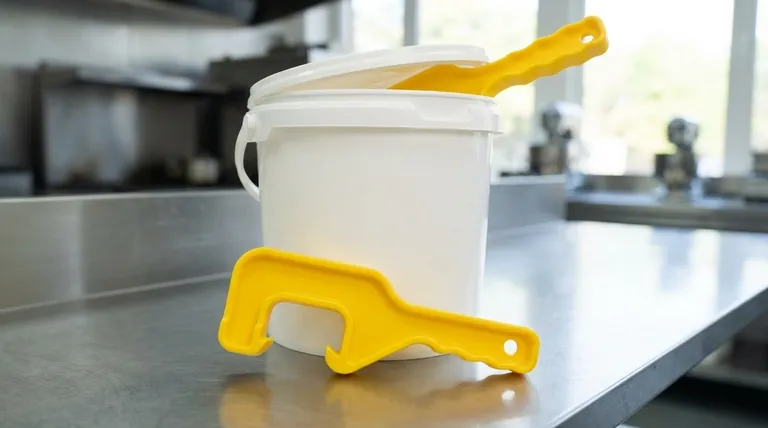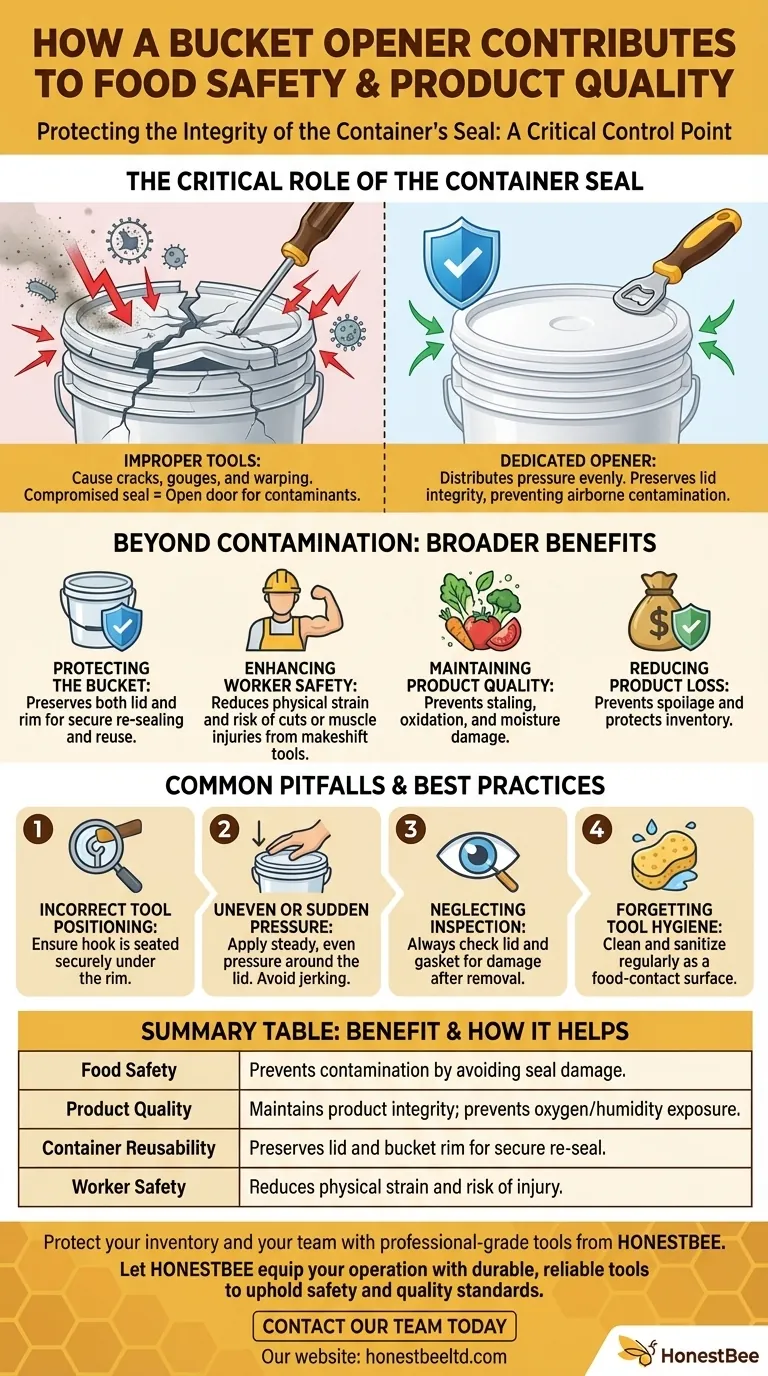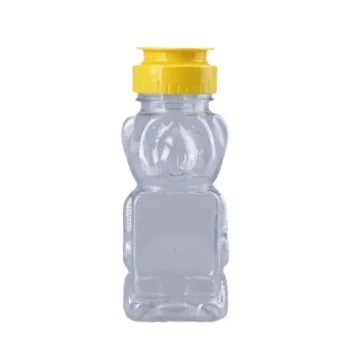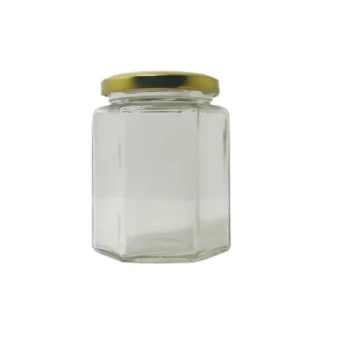At its core, a bucket opener protects food safety and product quality by preserving the integrity of the container's seal. Unlike improper tools that can crack or warp a lid, a dedicated opener ensures a clean removal, preventing airborne contaminants like dust and bacteria from entering and compromising the contents.
The simple act of opening a bucket is a critical control point in maintaining product integrity. A bucket opener is not a tool of convenience but a fundamental device for preventing contamination, ensuring quality, and protecting user safety.

The Critical Role of the Container Seal
The seal on a food-grade or industrial bucket is the primary barrier between a controlled internal environment and the outside world. Any damage to this barrier introduces immediate risk.
Preserving Lid Integrity
Using makeshift tools like screwdrivers or knives often applies force to a single, small point on the lid. This can easily cause cracks, gouges, or warping, permanently damaging the lid's ability to seal correctly.
A bucket opener is designed to distribute pressure evenly around the rim, lifting the lid without causing structural damage.
Preventing Contamination
A compromised seal is an open door for contaminants. In foodservice, this means dust, microbes, or moisture can spoil bulk ingredients, leading to waste or, worse, foodborne illness.
In industrial settings, it could mean a chemical or paint product is compromised by exposure to air or humidity.
Maintaining Product Quality
Beyond safety, a broken seal degrades quality. Oxygen can cause staling or oxidation, humidity can cause clumping in powders, and foreign particles can ruin an entire batch of product.
The clean opening provided by a proper tool ensures the product remains in its intended state until use.
Beyond Contamination: The Broader Benefits
While preserving the seal is the primary function for product quality, the benefits of using a dedicated opener extend to the container itself and the person opening it.
Protecting the Bucket
Forceful prying doesn't just damage the lid; it can also crack or warp the rim of the bucket itself. A damaged bucket cannot be re-sealed securely, making it unsuitable for storing remaining product.
A bucket opener preserves both components, allowing for effective re-sealing and reuse where appropriate.
Enhancing Worker Safety
Struggling to open a stubborn bucket with an improper tool is a common source of workplace injuries. Knives can slip, leading to cuts, and the excessive force required can cause muscle strain.
The leverage provided by a bucket opener significantly reduces the physical effort and risk involved in the task.
Common Pitfalls and Best Practices
Simply owning the tool is not enough. Proper use is essential to realize its benefits and avoid creating new problems.
Incorrect Tool Positioning
The opener's hook must be seated securely under the lid's rim before applying pressure. Improper placement can cause the tool to slip or concentrate force in the wrong area, damaging the lid.
Uneven or Sudden Pressure
Apply steady, even pressure as you work your way around the lid. Jerking the tool can cause it to slip or crack the plastic, defeating the purpose of using it.
Neglecting Inspection
After removing the lid, always inspect both the lid itself and the bucket's gasket or rim for any pre-existing or newly created damage. This is a final check to ensure a secure re-seal is possible.
Forgetting Tool Hygiene
In any food-contact setting, the bucket opener is a food-contact surface. It must be cleaned and sanitized regularly just like any other kitchen tool to prevent cross-contamination.
Making the Right Choice for Your Goal
Adopting the right tool is a simple process change that reinforces a commitment to quality and safety.
- If your primary focus is food safety: A bucket opener is a non-negotiable tool for preventing contamination and ensuring ingredients are fit for consumption.
- If your primary focus is reducing product loss: Using the correct tool prevents spoilage from exposure and protects your inventory from being compromised.
- If your primary focus is worker safety: This tool minimizes physical strain and eliminates the injuries associated with prying lids open with makeshift implements.
Ultimately, using a dedicated bucket opener is a mark of professional diligence that protects your product, your people, and your bottom line.
Summary Table:
| Benefit | How a Bucket Opener Helps |
|---|---|
| Food Safety | Prevents contamination by avoiding seal damage that lets in dust and bacteria. |
| Product Quality | Maintains product integrity by preventing exposure to oxygen and humidity. |
| Container Reusability | Preserves the lid and bucket rim, allowing for a secure re-seal. |
| Worker Safety | Reduces physical strain and risk of injury from slips or muscle strain. |
Protect your inventory and your team with professional-grade tools from HONESTBEE.
As a trusted wholesale supplier to commercial apiaries and beekeeping equipment distributors, we understand that maintaining product integrity is paramount. A high-quality bucket opener is essential for safely accessing bulk ingredients and supplies, ensuring they remain uncontaminated and effective.
Let HONESTBEE equip your operation with the durable, reliable tools you need to uphold the highest standards of safety and quality.
Contact our team today to discuss your wholesale needs and discover the HONESTBEE difference.
Visual Guide

Related Products
- 5 Gallon Pail Opener Bucket Opener Tool for Honey Bucket
- 8-Frame Electric Self-Reversing Honey Extractor Spinner for Commercial Honey Extraction Equipment
- 10L Stainless Steel Electric Honey Press Machine
- HONESTBEE 3-Frame Manual Acrylic Honey Extractor
- 24 Frame Honey Extractor Commercial Radial Honey Frame Extraction Machine
People Also Ask
- What is a bucket opener and what is its primary function? Open Pails Safely & Preserve Seals
- Can a bucket opener work on any type of plastic lid? Unlock the Secrets to Easy Pail Opening
- What are the best practices for using a bucket opener? Open Buckets Safely & Efficiently
- Why are bucket openers important for efficiency and safety? Boost Speed & Protect Your Products
- What are some common uses for bucket openers? Essential for Safety & Efficiency in Commercial Operations



















